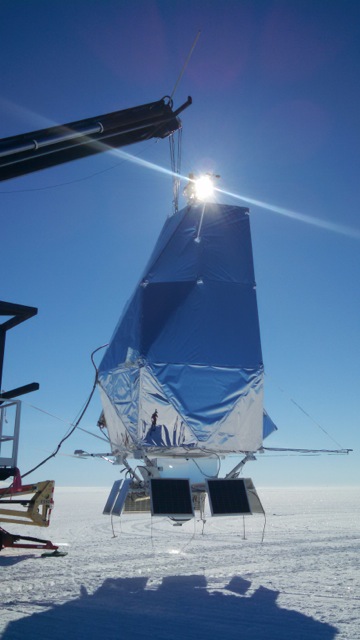
Dawn Approaches
Maybe you remember back in 2011 when NASA’s asteroid-investigating probe Dawn caught up with Vesta, an asteroid-slash-minor-planet under the current IAU scheme. If not, it might come as a surprise to you to learn that this probe (which you haven’t been paying attention to) is about to reach another major object in the solar system, the dwarf planet Ceres. Ceres is just shy of 600 miles wide (almost 1000km) and because of its place in the asteroid belt, it’s unique in our solar system. All the other dwarf planets, like Pluto, Sedna, and Makemake, orbit much further out, around the orbit of Neptune. The best shots we’ve gotten of Ceres have been blurry little circles taken by the Hubble, so Dawn’s approach is going to be pretty exciting (Phil Plait has a good bit on the Hubble and looking at the moon, but suffice it to say that Hubble has a resolution of 0.05 arc-seconds, and at its biggest, Ceres is 0.84 arc-seconds from the surface of the Earth, meaning that even from its vantage point in space, the photos the Hubble can get of it are pretty pixelated). At its current speedy ion-drive pace, the probe should reach Ceres by March, but by the end of January it’ll be close enough that its photos will be the best ever taken. Keep your eyes peeled, and check out Phys.org and JPL’s Dawn blog for more on the approach.
Balloon News

Early in the week, NASA launched a new model of balloon over Antarctica, one designed to stay aloft for a hundred days or more, thanks to its new ability to maintain a constant pressure. It’s thought that the new balloon will allow for longer (and therefore cheaper) missions to the edge of the atmosphere, but in this case it was a bit of a bust, as they had to bring the balloon down after just two days due to a leak.
In other balloon news, however, Caltech and Princeton astronomers managed a balloon launch of their own this week, and it seems to be going well so far. Spider (the Suborbital Polarimiter for Inflation, Dust and the Epoch of Reionization) may help to clear up whether primordial gravity waves really were detected last year, or if it was indeed just cosmic dust. The balloon should be up there for twenty days, after which there’ll be a lot of poring over the data. Check out the blog at Princeton for updates.
ArXiv.org Hits 1Million
The pre-print server slash bulletin board of new and exciting science, arXiv.org (pronounced “archive dot org”), hit a million articles this week. Started in 1991, it’s become the place for scientists, engineers, and mathematicians to post early versions of their articles, in advance of a peer-reviewed publication elsewhere. This early-release system is like leaving a note on the wall that says “hey guys, look what we think we’ve found,” and while it doesn’t have the same kind of academic rigor as a peer-reviewed journal, it gets conversations started that might not otherwise happen for years (the peer review process is, if nothing else, very long). So happy millionth, arXiv, and here’s to another million and more. Nature has the full story.
Spartan
In the tech world, the news this week is surrounding what those of us who no longer use it affectionately refer to as “Internet Exploder.” According to the internet rumour mill, in the up-and-coming version of Windows, known simply as “10,” there will be two browsers: the last iteration of IE, and something new. The new browser is codenamed “Spartan” as is apparently meant to be more like Chrome or Firefox, with its own extensions or apps. It will apparently be “lighter and quicker” than its legacy counterpart, and we might get a sneak peek at it when Windows 10 is officially announced at the end of January. Guess we’ll wait and see. Check out Ars for more.
Short Week Best of the Rest
With so many universities closing over the winter inter-session, there hasn’t been a ton of news this week. So here are a few more things to tide you over: there’s some positive news on the AIDS front, with new research into how the outer shell of the virus disassembles in order to infect the host cell; Germany’s designing a new tank and investing in the uncertain future; and some scientists answered the question “what scientific idea should die?”
Lastly, here’s a video of something called “The Big Wind.” It’s a Hungarian combination of an old tank, two jet engines, and a whole lot of water, being used to put out a fire.
https://www.youtube.com/watch?v=E16g1_ibpBM
